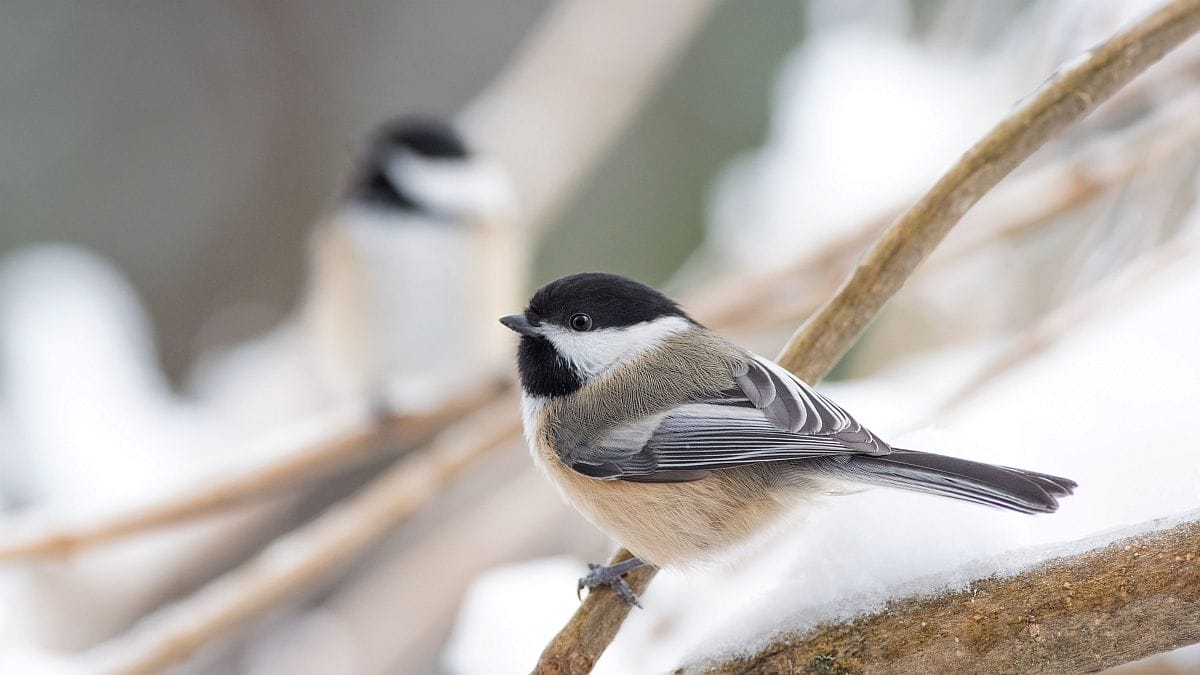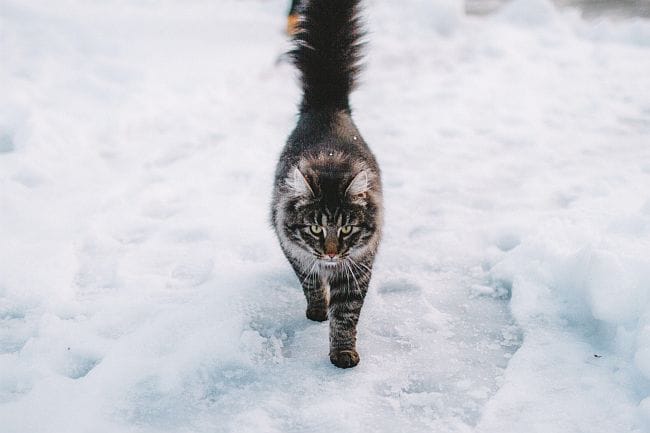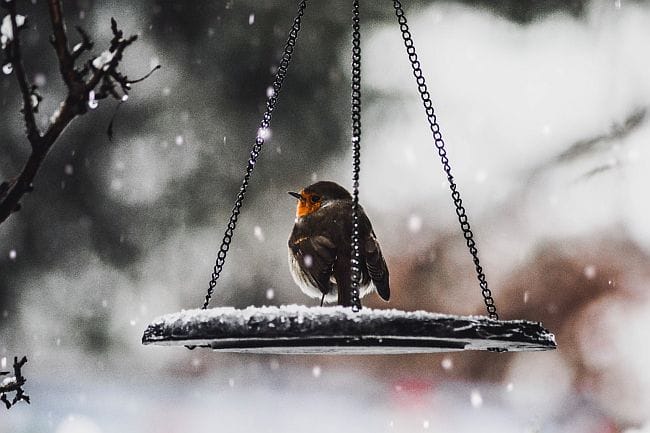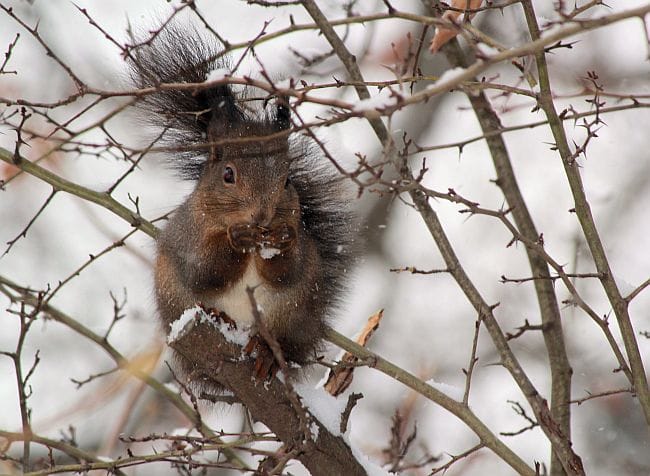

Uh oh...
It appears that you're using a severely outdated version of Safari on Windows. Many features won't work correctly, and functionality can't be guaranteed. Please try viewing this website in Edge, Mozilla, Chrome, or another modern browser. Sorry for any inconvenience this may have caused!
Read More about this safari issue.

With all the mild temperatures in Arkansas, it might be difficult to believe that the season we are currently experiencing is indeed winter. A few green sprouts are peeking up through my garden, and thanks to the crazy weather this year, a few daffodils. Joining them both are plenty of birds, some of which I can’t help thinking look a little hungry.
Worried, I researched to find how to keep birds fed in the winter.
There are lots of basic birdseed options available at your local home improvement or grocery stores, but keeping our feathered friends happy during these guaranteed-to-be-winter-even-if-it-doesn’t-feel-like-it months requires attention to more than just what kind of seed we’re providing.
Here are some tips for making sure the birds in our yard give us the award for “Favorite Local Café.”
Gimme Shelter
If we take pleasure in seeing chickadees and cardinals dining in our yards, let’s make sure the environment for them is as safe as possible. We don’t want the birds worried about becoming a snack while eating one themselves.

The biggest risk to wild birds is domestic cats. Hawks, owls, and other raptors can also be lurking around yards in hopes of finding a meal. Hang bird feeders in sheltered areas near tree branches and shrubs, or close to the house to provide a place for them if danger approaches. Pay attention to landscape walls and other objects that could act as a launchpad for critters. We don’t want to set the scene for a tragedy.
Say No to Soggy Seed
“Soggy” is generally not a word any human wants to be associated with food, and our feathered friends are no different. Not only does moisture make the seed clump together into chunks that are harder to eat, but it also allows mold to develop.

When choosing a bird feeder, look for broad overhangs on the roof and an enclosed food container to hold the seed. Be sure to check it after a wet weather day to clear away anything inedible, especially if it is an open feeder.
Keep an eye out for a bird feeder that also provides an adequate deck area or perches with room for the birds to land and take off comfortably.
Keep it Clean
In addition to a quick cleaning after a rainy day, take the time to empty the bird feeder every couple of weeks. Wash it well and let it dry before refilling with fresh seed and putting it back out in the yard. This helps deter mold and makes sure your backyard flock is not plotting to recreate a Hitchcock film next time you take a stroll.

Fatten Them Up
As much as you can, choose seed with a higher oil content: black oil sunflower seed, hulled peanuts, nyjer (thistle) seed, peanut butter and suet, or white millet seed. These are great options for keeping their energy levels up and helping birds stay “fluffy” in winter months before higher-protein meals of caterpillars and insects become available in the spring. A healthy bird is better equipped to perpetuate the species by laying healthy eggs. “Birdwatcher’s Digest” offers a great list of food options for your backyard feeders.
Distract and Disburse
If your yard is like mine, birds often have to fight with squirrels for a seat at the table, especially if the seed mix contains cracked corn. To alleviate this battle, I have been buying dried corn (on or off the cob) to scatter at least 50 feet away from where I feed the birds. The squirrels seem to be content filling their bellies on that, and do a lot less grazing at the bird feeder.

Keep Them Hydrated
It might be too cold for baths, but like humans, birds need access to water in winter. If ice forms easily in your area, you can invest in a birdbath heater to keep water melted, but pouring a warm pitcher of water in the birdbath is an easy solution for those places that don’t remain below freezing all day.
Whether you enjoy the gardening part of having a garden, or just like seeing a few birds in your yard during warmer months, spending a little time keeping them happy now will ensure they’ll still be around come spring. Happy bird watching!
Photos: Jacek Dylag, Peter Lewis, Clever Visuals, Pedro Tortelli, Dusan Smetana via Unsplash.com
Join the Conversation
Leave a Comment
2 responses to “Birds in the Winter Garden in Arkansas”
 Leave a Reply
Leave a Reply
We do the work.
You check your email.
Sign up for our weekly e-news.
Get stories sent straight to your inbox!












 Leave a Reply
Leave a Reply
[…] As other food sources become scarce, the creatures also tend to be more interested in feeders, and can easily be attracted to your home garden or backyard. […]
[…] Native Birds of Arkansas Lead Poisoning in Arkansas Birds Arkansas State Symbols: Mockingbird Wild Turkey in Arkansas Raining Ducklings: Arkansas Wood Ducks 8 Winter Birds in Arkansas Birds in the Winter Garden […]